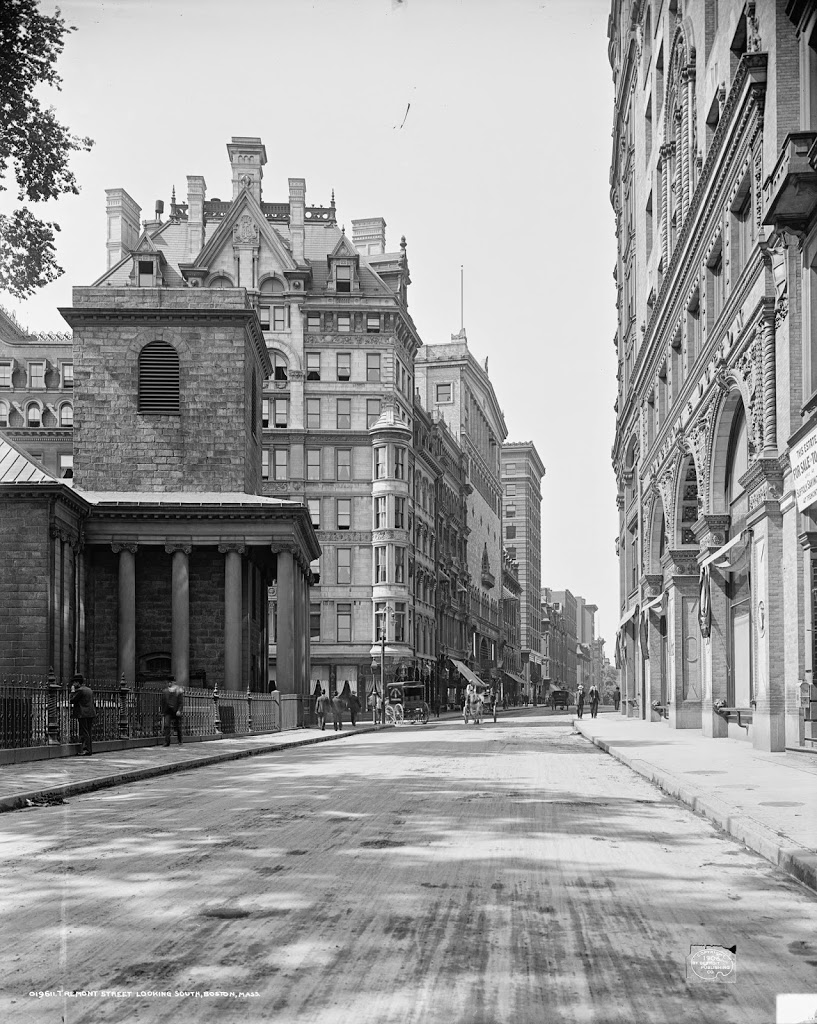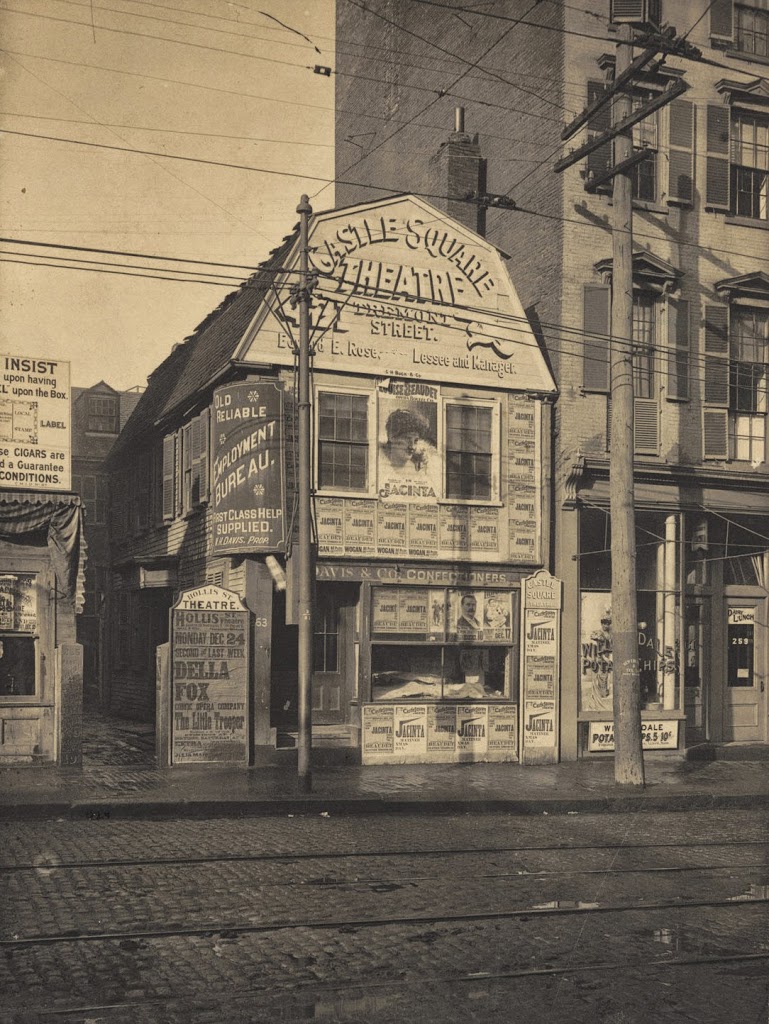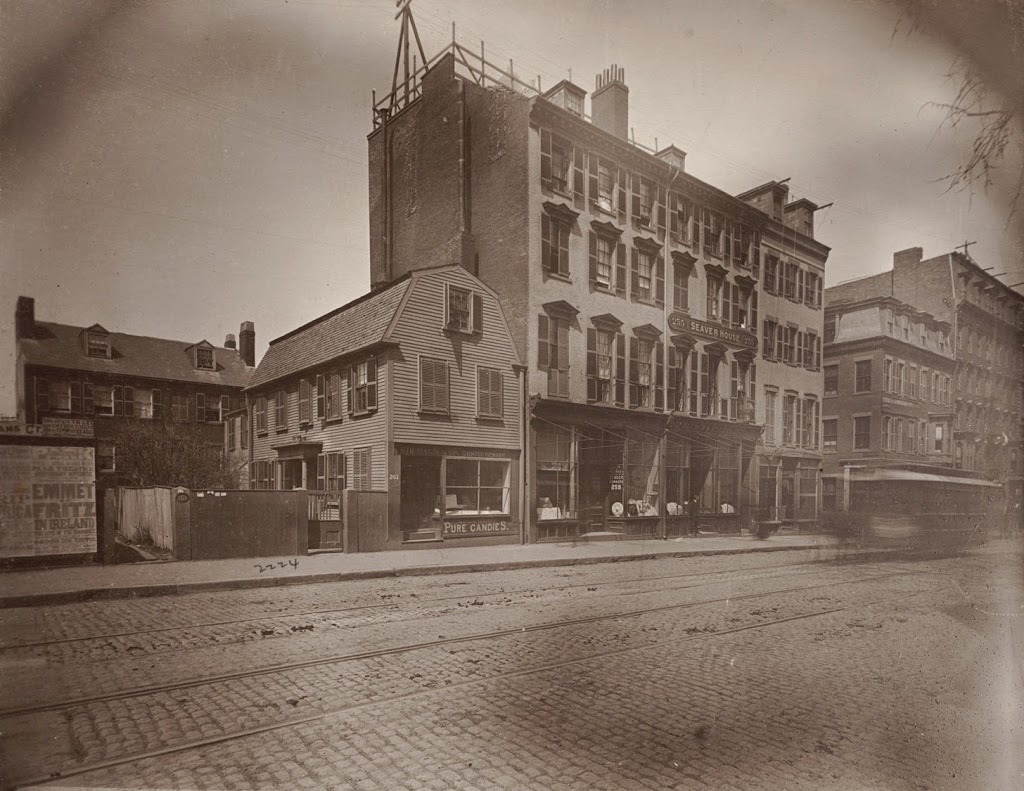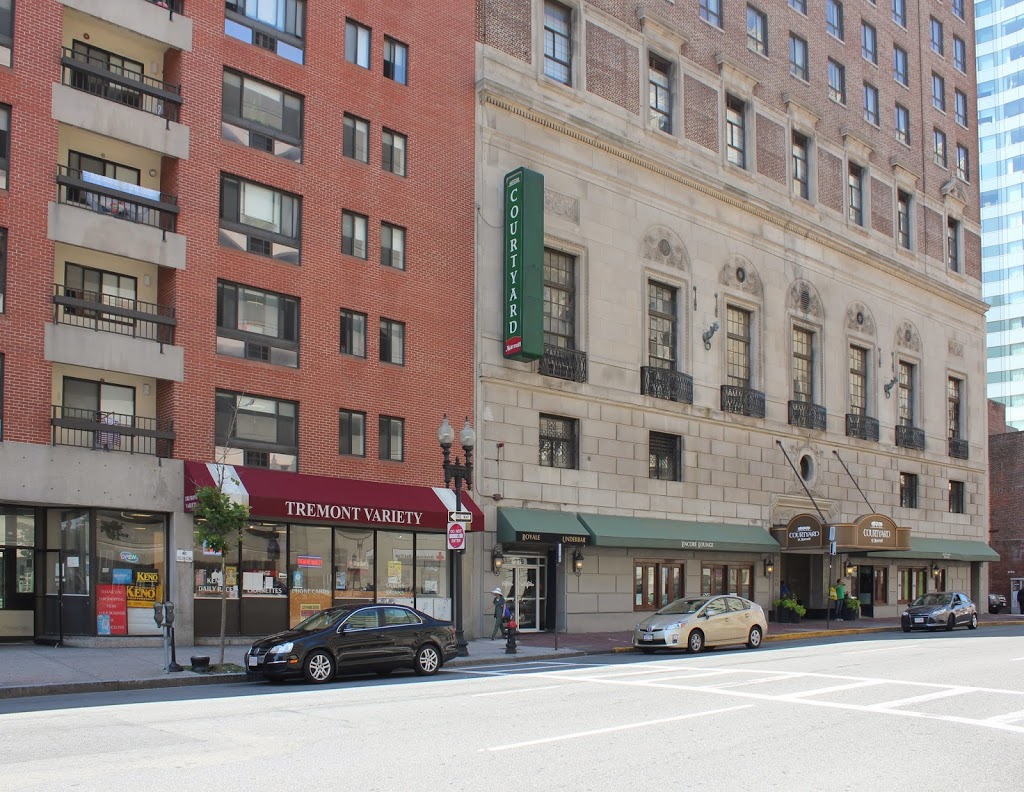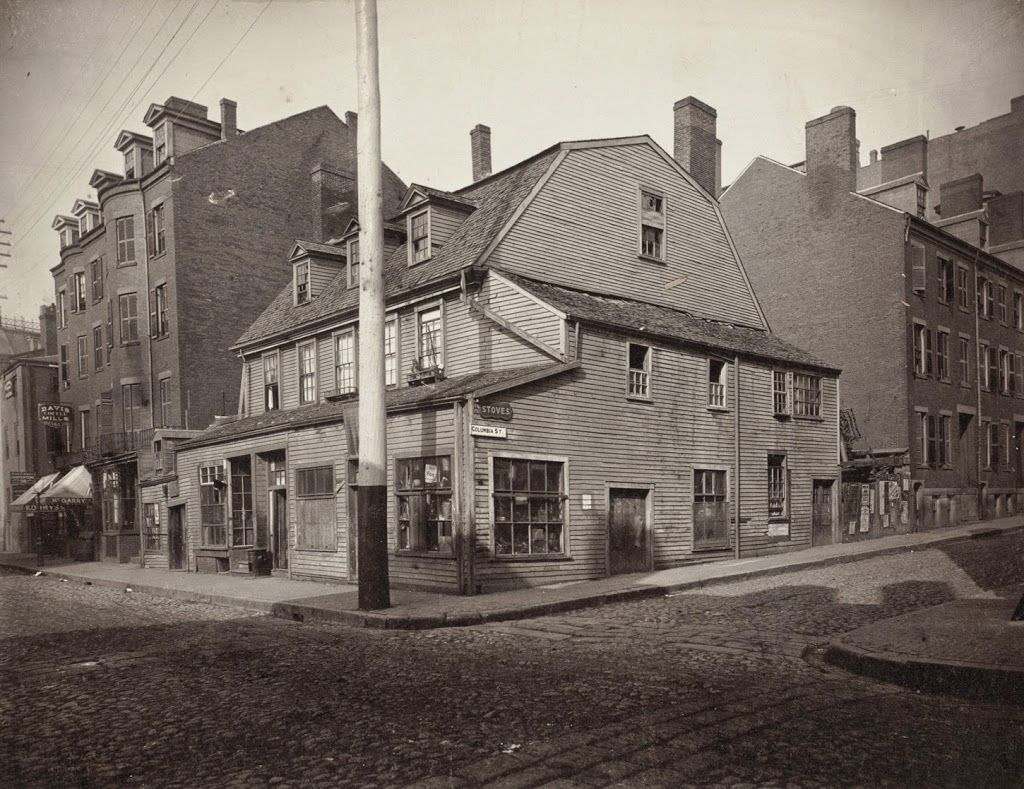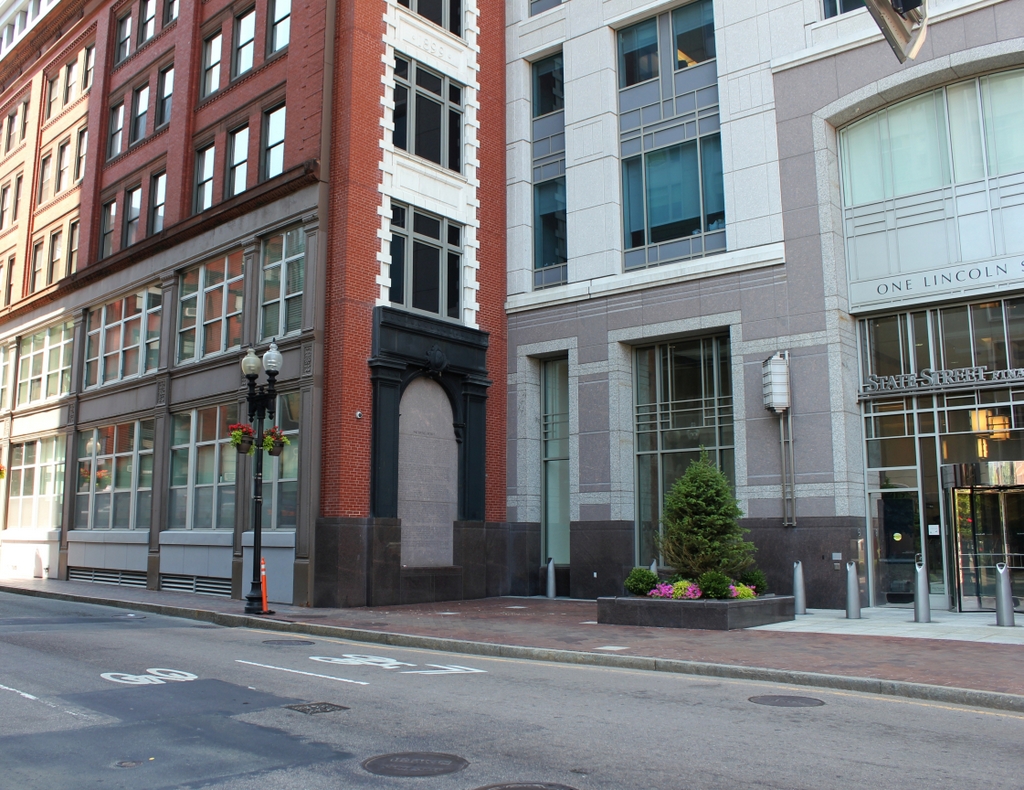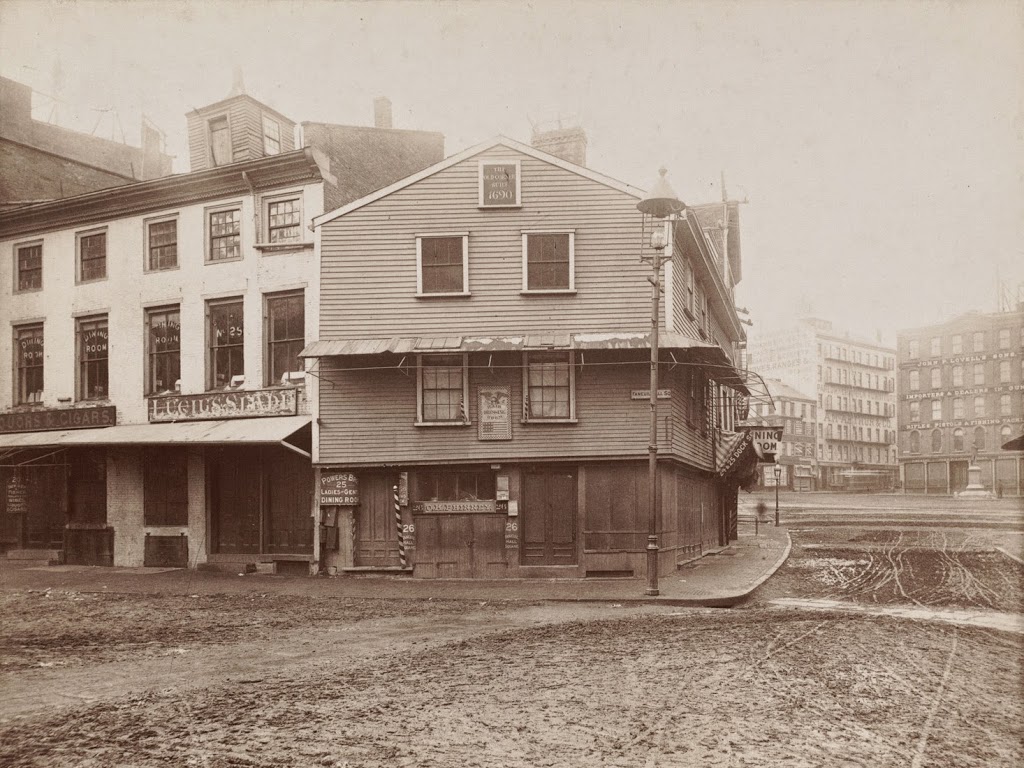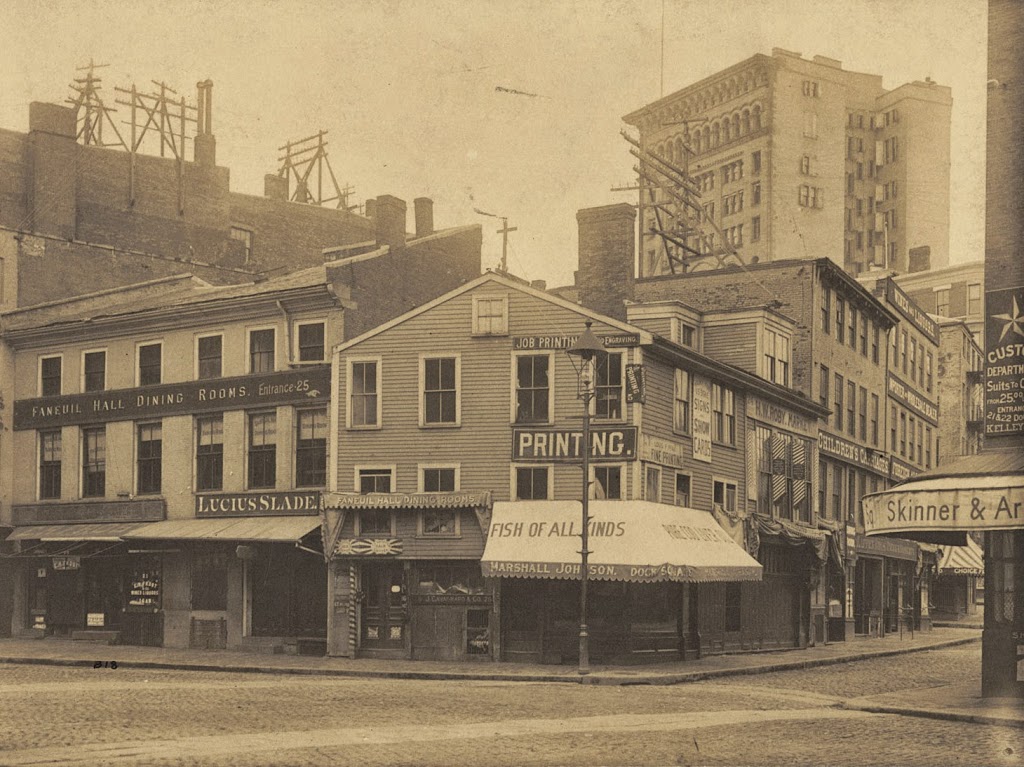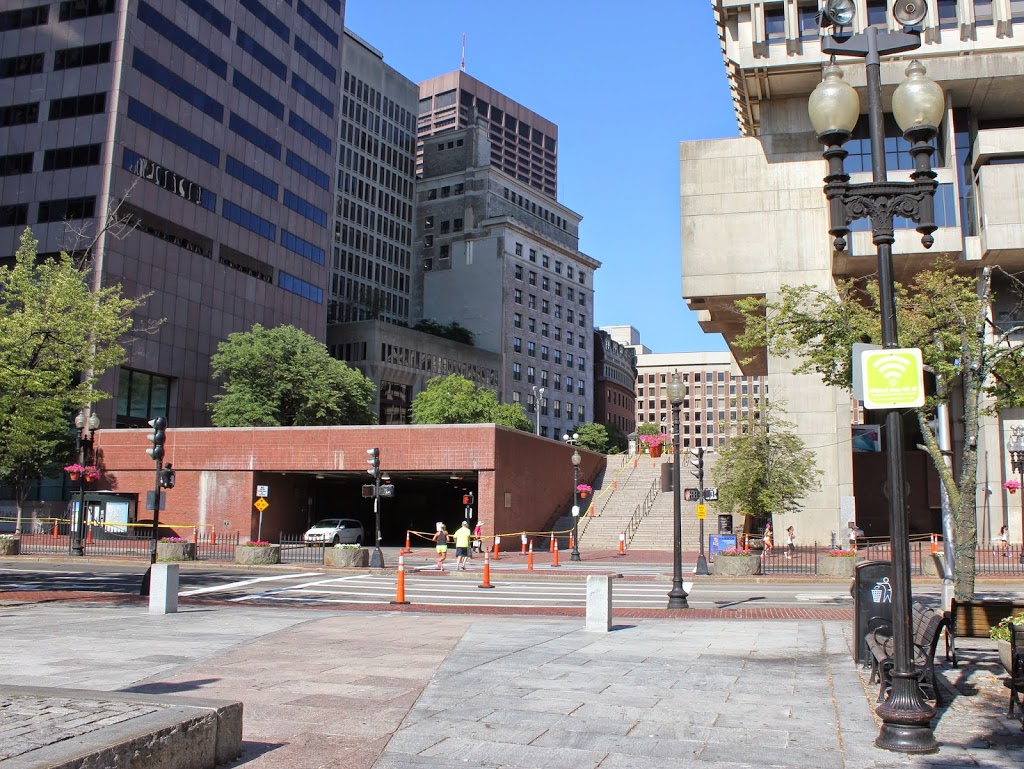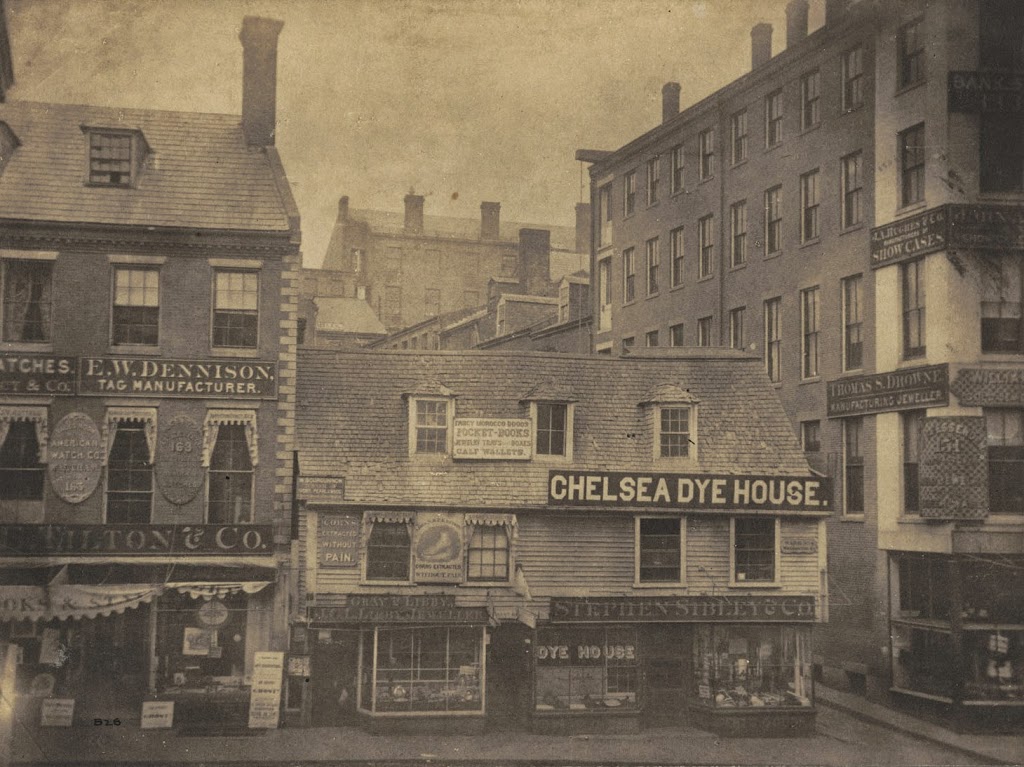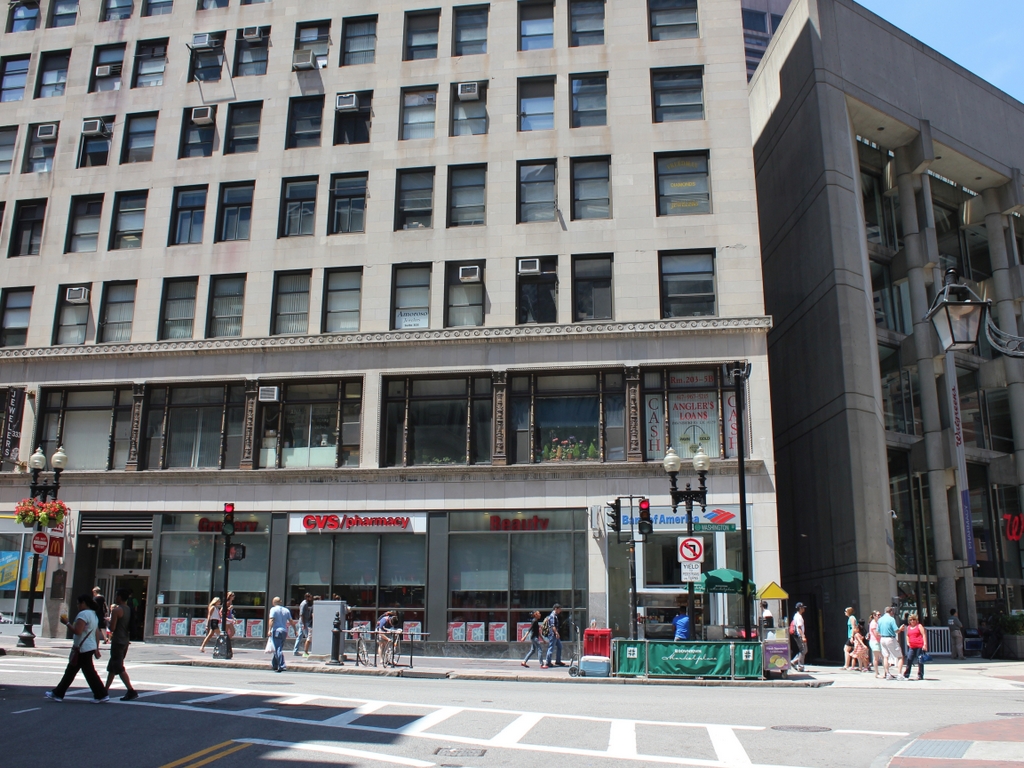Looking south on Tremont Street in Boston, toward School Street, around 1906. Image courtesy of the Library of Congress, Detroit Publishing Company Collection.
The scene in 2021:
These photos were taken from right across the street from the ones in this post, although the “then” photo here was taken nearly 50 years after the one in the other post. Aside from King’s Chapel, which predates the first photo by about 150 years, a few other buildings survive from the 1906 scene. The most obvious one is the Tremont Temple, the third building on the left after King’s Chapel. It was built in 1896 and continues to serve as a Baptist church.

